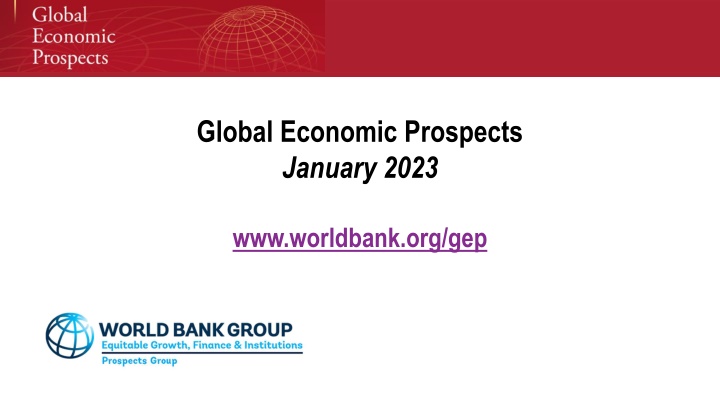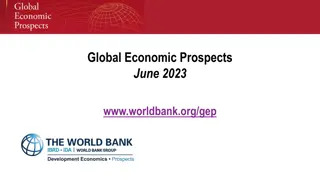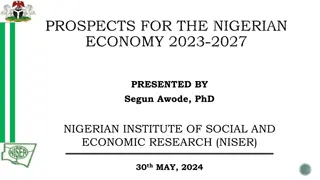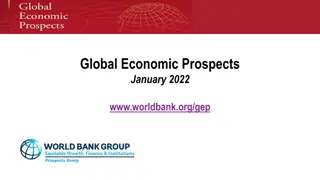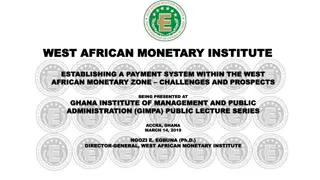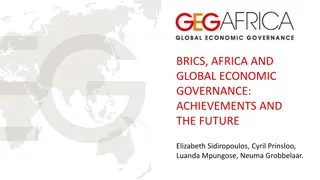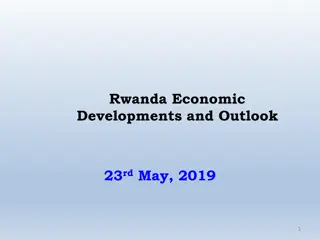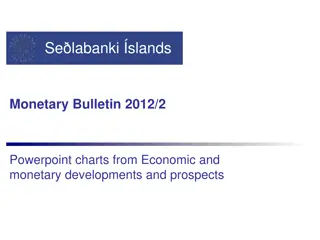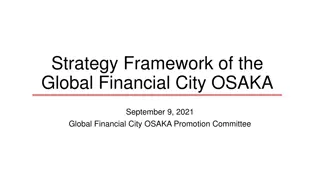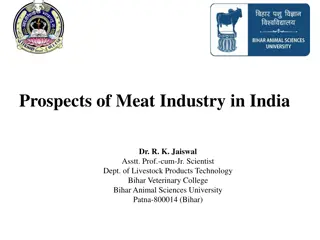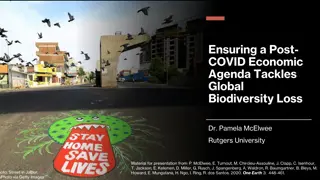Global Economic Prospects January 2023 Overview
The January 2023 Global Economic Prospects report by the World Bank covers topics like Global Outlook, Regional Outlooks, Investment Growth After the Pandemic, and challenges faced by Small States. It includes growth forecasts, changes in growth forecasts for 2023, risks such as persistent inflation and geopolitical turmoil, monetary policy impacts, and global growth scenarios for 2023-24 with a heightened risk of a global recession due to higher interest rates. The report also discusses investment trends in Emerging Markets and Developing Economies with a focus on weaker growth and slow recovery over the past decade.
Download Presentation

Please find below an Image/Link to download the presentation.
The content on the website is provided AS IS for your information and personal use only. It may not be sold, licensed, or shared on other websites without obtaining consent from the author.If you encounter any issues during the download, it is possible that the publisher has removed the file from their server.
You are allowed to download the files provided on this website for personal or commercial use, subject to the condition that they are used lawfully. All files are the property of their respective owners.
The content on the website is provided AS IS for your information and personal use only. It may not be sold, licensed, or shared on other websites without obtaining consent from the author.
E N D
Presentation Transcript
Global Economic Prospects January 2023 www.worldbank.org/gep
Global Economic Prospects January 2023 Global Outlook (Chapter 1) Regional Outlooks (Chapter 2) Investment Growth After the Pandemic (Chapter 3) Small States: Overlapping Crises, Multiple Challenges (Chapter 4) 2
Global Economic Prospects January 2023 Underlying data and charts can be found at www.worldbank.org/gep 3
Growth Forecasts A Sharp Downturn in 2023 GDP growth (Percent) 4
Changes in Growth Forecasts for 2023 Downgrades for Most Countries Country groups by the type of growth forecast revisions since June for 2023 (Percent of countries) 5
Risks Multiple and Interconnected Downside Risks Persistent inflation Geopolitical turmoil Climate-related disasters Fragmentation of global trade, investment, and financial networks Unanticipated monetary tightening Energy and food insecurity Weaker longer-term growth prospects and larger development challenges Social tensions Financial stress COVID-19 outbreaks 6
Monetary Policy and Financial Markets Higher Interest Rates; Elevated Inflation; Tighter Financial Conditions Interest rate expectations (Percent) Survey-based inflation expectations (Percent) EMDE sovereign spread changes, 2022 (Percentage points, by energy trade) 7
Global Growth Scenarios for 2023-24 Heightened Risk of Global Recession with Higher Interest Rates Nominal short-term interest rate (Percent) Real short-term interest rate (Percent) Global growth (Percent) Global per capita growth (Percent) 8
Investment in EMDEs Weaker Growth during the Past Decade; Slower Recovery Going Forward Investment growth, 2000-21 (Percent) Investment in EMDEs (Index, t-1 = 100) Investment growth, 2020-23 (Percent) 9
Volatility, Growth, and Debt in Small States Higher Volatility; Weaker Recovery; Larger Debt Growth volatility in small states (Standard deviation) GDP compared to pre-pandemic level (Percent difference from 2019) External debt (Percent of countries) 10
Policy Priorities - 1 Need for Global Cooperation and Macroeconomic Stability Global policy challenges Mitigate risk of global recession by implementing transparent, consistent and credible policies Address debt distress in EMDEs, especially frontier markets and LICs Bolster international cooperation to reduce food insecurity and avoid protectionist measures Set the foundations for GRID by tackling climate change and accelerating energy transition Monetary and financial policy challenges Tighten policy to the extent needed to ensure inflation expectations well anchored Communicate policy actions clearly, leverage credible frameworks, and safeguard central bank independence Strengthen macroprudential policy to reduce vulnerability to capital outflows and currency pressures Fiscal policy challenges Curtail inefficient spending, including by moving away from/repurposing expensive and regressive subsidies Enhance efficiency of critical productive spending while providing targeted support to vulnerable groups Improve revenue collection by broadening tax base and improving tax administration Strengthen fiscal frameworks and debt management 11
Policy Priorities - 2 Implementing Policies to Boost Growth and Resilience Boosting investment Strengthen investment to meet development and climate goals Improve public spending efficiency, reallocate spending towards priority investments Improve governance frameworks and business climates to foster private investment Streamline regulatory environment to encourage private investment Facilitate trade and global value chain integration and digitalization to attract private investment Strengthening resilience and inclusion Establish flexible social protection systems to support vulnerable groups during major shocks Reduce food insecurity by avoiding market distortions and pursuing investments in agricultural R&D, diversification of food sources, and targeted interventions such as nutrition programs Increase female labor force participation and promote financial inclusion Improving growth and resilience in small states Enable diversification through digitalization, reducing trade costs, and fostering new industries (e.g., eco-tourism) Invest in climate adaptation and domestic renewable energy sources Ensure disciplined financial management of state-owned enterprises Establish fiscal mechanisms (e.g., fiscal rules, disaster stabilization funds) to enhance disaster risk management 12
Questions & Comments January 2023 www.worldbank.org/gep 13
